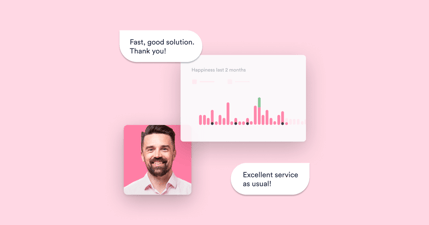Agent Utilization is one of the many metrics tracked by service desks to manage costs since the service desk is usually perceived as a cost center, i.e., a part of the business or organization that does not contribute to profit but still costs money to operate. The major component of the cost of operating a service desk is the cost of labor. Even though there are expenses for equipment, software licensing, and many other items, agent salaries and benefits make up more than half of the expenses, with additional costs for supervisors, trainers, and quality assurance personnel bringing the total labor costs to almost two-thirds.
"Labor productivity then is the biggest lever we have to manage and control service desk costs." - MetricNet
That is not all that different from any other part of a business. People are expensive, and that's why most cost-cutting initiatives start by reducing labor in one way or another. Reduction in force (RIF), cutting hours, reducing benefits, cutting training and travel, and replacing humans with technology are all used to reduce spending.
Without being a business partner, IT may think it is making substantial progress by cutting labor costs at the service desk. This is another example of inside-out thinking: taking a narrow point of view based on our own wants, needs, and measures without looking from the consumer's perspective. We should be examining what we mean by Productivity.
According to MetricNet, "… the best measure of labor productivity is agent utilization."
Here is the formula MetricNet provides:
So, in this metric, agent "productivity" is measured solely by how much time the agent spends on the phone (in this case), in email, or in chat to solve an issue for an end-user. In other words, the more time an agent spends doing Keeping the Lights On (KTLO) work, the more productive they are. This is like measuring salespeople by the number of calls they make or emails they send rather than by the number and value of deals they close. It is a quantitative measure, not a qualitative one.
Looking through the lens of end-user experience
When we talk about Productivity in the context of IT interruptions (incidents), we mean the ability to get work done. To a marketer, that means the ability to create copy that generates interest and informs customers and potential customers. To a data analyst, it means the ability to retrieve and analyze the specific data they need. To a scientist, it means the ability to design experiments, see results, and create and file grant applications.
In almost any modern business, Productivity is dependent on information technology. When there's an interruption in the technology, Productivity suffers. Viewing the Utilization metric as a measure of Productivity means that IT and the end-users in an organization are at opposite ends of a balance scale: When the business users can be highly productive, the need for agents to be engaged in support conversations drops, and their Utilization drops as well. When there are IT incidents, agent Utilization goes up.
Within certain limits, this means that there is an unintended incentive for IT incidents. To put a different twist on the old saying, "If it ain't broke, you don't get to fix it. If you don't get to fix it, you ain't productive."
Let's try another way
Instead of looking at the support functions as being productive when they are fixing things, we need to look at them as being at their most productive when nothing is breaking, or at least nothing that negatively impacts business.
The support functions of IT are not there to boost their own profiles and justify their own existence; they are there to ensure the smooth operation of the entire organization. The smoother the operations are (fewer interruptions), the better job the IT organization as a whole—including support—is doing.
As the HappySignals Global IT Experience Benchmark Report tells us, 80% of the lost productive time end-users experience comes from 13% of IT incidents. Would it be unfair to say that the most productive use of IT's time (including those in support, who are closest to the end-users) is to reduce or even eliminate that 13%? Instead of measuring Productivity by the number and duration of contacts, what if we measure it by tracking the number of incidents prevented, problems solved, and the amount of knowledge curated and applied to help end-users find better ways to work, understand technology changes, and communicate better, without interruption?
How can we measure what didn't happen?
At first glance, it may seem impossible to measure nonexistent incidents, but we have the technology to assist us.
From TechTarget:
"IT incident management best practices continue past a resolution to include a thorough post-mortem to evaluate what went wrong, and how to prevent it in the future… how to lay the groundwork for an effective post-mortem process and report, which includes a detailed summary of the incident, a breakdown of the triggers that caused it, and recommendations to prevent the same issue from occurring in the future."
The main reason such thorough examinations have not been done in the past was that the staff was too busy doing that KTLO work—in other words, being utilized and "productive."
Where can we start?
A perfect place to start is with the information provided through ITXM™. Begin by discovering where most of your lost Productivity is coming from. What is breaking? What takes the longest time to fix? What are end-users saying prevents them from being productive for the longest time? What indications were there that these incidents were going to happen? What could have been done to avoid them?
With that information in hand, begin strategizing better ways to prevent interruptions, work on problem management, and share better practices with end-users. Everyone is talking about how AI-enabled tools will save time. These are good ways to use that time.
With modern monitoring and detection tools and the advent of AI's anomaly detection capabilities, IT has a much better chance of becoming genuinely proactive and focused on keeping the Productivity of the entire business high.
Above all, stop measuring the inside-out focused things and concentrate on helping the organization as a whole.
To learn more about the IT experience management framework, please take a look here.




